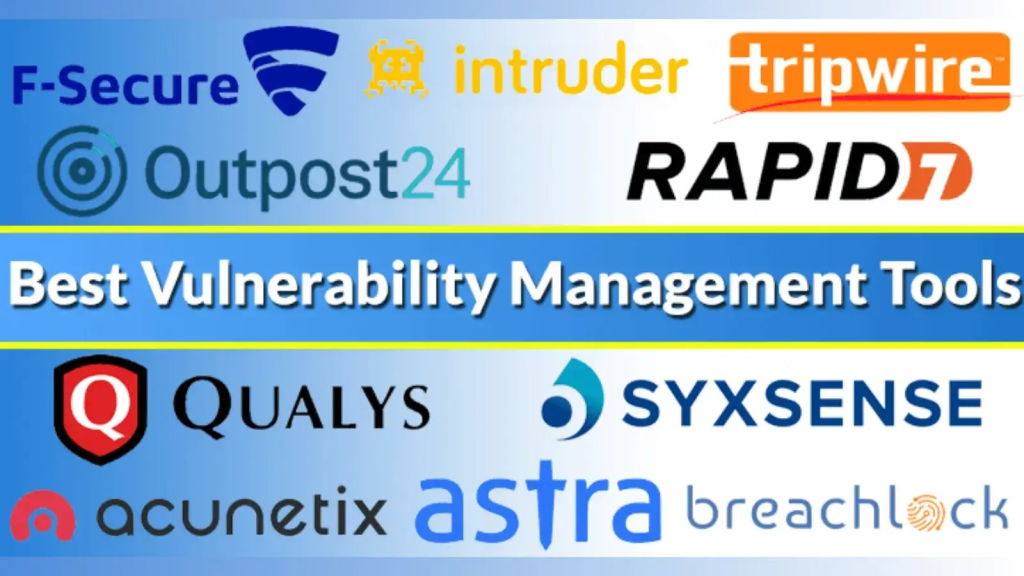
The landscape of vulnerability management tools is constantly evolving, and 2024 promises exciting advancements in automation, risk prioritization, and integration with other security tools. Here are some of the leading players to keep an eye on:
1. Tenable Nessus:
- A well-established and widely used solution, known for its comprehensive vulnerability scanning capabilities and extensive coverage of operating systems, applications, and devices.
- Offers real-time monitoring, detailed reporting, and remediation guidance.
- Can be expensive for smaller organizations and may require some expertise to set up and manage.
2. Rapid7 Nexpose:
- Similar to Nessus in its range of features, Nexpose focuses on providing actionable insights and prioritizing vulnerabilities based on risk and exploitability.
- Offers patch management, cloud security integrations, and advanced threat intelligence.
- May lack some of the advanced features of Tenable Nessus and can be resource-intensive on older hardware.
3. Qualys VMDR:
- A cloud-based platform that combines vulnerability management with endpoint detection and response (EDR) capabilities.
- Provides continuous visibility into IT infrastructure and prioritizes vulnerabilities based on real-time threat intelligence.
- Can be costly for larger organizations and requires a good internet connection for optimal performance.
4. Acunetix Vulnerability Scanner:
- This web application scanner specializes in identifying vulnerabilities in websites and web applications.
- Offers detailed reports, penetration testing simulations, and integration with CI/CD pipelines.
- May not be as comprehensive as general-purpose vulnerability management tools for network and system vulnerabilities.
5. Sysdig Falco:
- An open-source runtime security tool that can be used for vulnerability detection alongside other security activities.
- Monitors system activity in real-time and can detect changes that may indicate vulnerabilities or exploits.
- Requires some technical expertise to configure and interpret alerts.
6. Orca Security:
- A cloud-native vulnerability management platform designed for containerized workloads and Kubernetes environments.
- Provides continuous scanning and monitoring of container images and deployments.
- Integrates with CI/CD pipelines and vulnerability databases for automated remediation.
7. Aqua Security CloudSploit:
- Similar to Orca Security, CloudSploit focuses on securing cloud infrastructure and identifying misconfigurations that can lead to vulnerabilities.
- Offers continuous monitoring and analysis of cloud resources for security risks and compliance violations.
- May require specific expertise in cloud platforms and cloud security concepts.
8. StackRox:
- Another container security platform that offers comprehensive vulnerability management for containerized applications.
- Provides runtime security, image scanning, and compliance auditing for Kubernetes environments.
- Can be complex to set up and manage for large-scale deployments.
Choosing the Right Vulnerability Management Tool:
When selecting a vulnerability management tool, consider these factors:
- Your IT infrastructure: What types of systems and applications do you need to protect?
- Your budget: How much are you willing to spend on a tool?
- Your expertise: Do you have the technical skills to manage and interpret the results?
- Your security goals: What specific vulnerabilities are you most concerned about?
By carefully evaluating your needs and comparing the features and benefits of different tools, you can choose the best vulnerability management solution to keep your organization safe in 2024 and beyond.
Say goodbye to the hassles of bike ownership! MotoShare.in offers affordable rentals, whether you need a scooter for errands, a bike for a road trip, or a reliable ride to explore new cities.

 Starting: 1st of Every Month
Starting: 1st of Every Month  +91 8409492687
+91 8409492687  Contact@DevOpsSchool.com
Contact@DevOpsSchool.com
